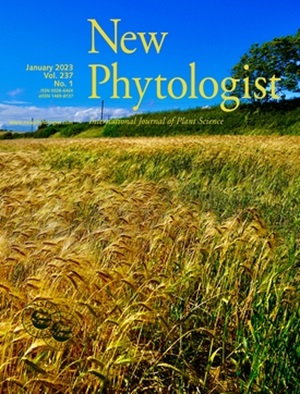Aboveground whole-plant live imaging method for nitric oxide (NO) reveals an intricate relationship between NO and H2O2
IF 8.3
1区 生物学
Q1 PLANT SCIENCES
引用次数: 0
Abstract
- Nitric oxide (NO) is a key regulator of plant development, growth, and responses to the environment. Together with hydrogen peroxide (H2O2), NO modifies the structure and function of proteins, controlling redox signaling. Although NO has been studied extensively at the cellular and subcellular levels, very little is known about changes in NO content at the whole-plant level.
- Here, we report on the development of an aboveground whole-plant live imaging method for NO. Using mutants with altered NO levels, as well as an NO donor/scavenger, we demonstrate the specificity of the detection method for NO.
- Arabidopsis thaliana plants were found to produce a basal level of NO under control conditions. NO levels accumulated enzymatically in plants following heat stress applied to the entire plant, as well as in a systemic manner following different locally applied stimuli. Similar or opposing accumulation patterns were also found for NO and H2O2 during the response of plants to different stimuli.
- Our findings reveal that NO accumulates during the systemic response of plants to a local stimulus. In addition, they shed new light on the intricate relationships between NO and H2O2. The new method reported opens the way for multiple future studies of NO's role in plant biology.
一氧化氮(NO)是植物发育、生长和对环境反应的关键调节因子。一氧化氮与过氧化氢(H2O2)一起改变蛋白质的结构和功能,控制氧化还原信号。虽然人们已经在细胞和亚细胞水平上对 NO 进行了广泛研究,但对整个植物水平上 NO 含量的变化却知之甚少。利用 NO 含量发生变化的突变体以及 NO 供体/清除剂,我们证明了 NO 检测方法的特异性。在对整个植株施加热胁迫后,植物体内的 NO 含量会发生酶积累;在局部施加不同刺激后,植物体内的 NO 含量也会发生系统性积累。我们的研究结果表明,在植物对局部刺激做出系统反应时,NO 会积累。我们的研究结果表明,NO 在植物对局部刺激的系统反应过程中积累,此外,它们还揭示了 NO 和 H2O2 之间错综复杂的关系。所报告的新方法为今后研究 NO 在植物生物学中的作用开辟了多种途径。
本文章由计算机程序翻译,如有差异,请以英文原文为准。
求助全文
约1分钟内获得全文
求助全文
来源期刊

New Phytologist
生物-植物科学
自引率
5.30%
发文量
728
期刊介绍:
New Phytologist is an international electronic journal published 24 times a year. It is owned by the New Phytologist Foundation, a non-profit-making charitable organization dedicated to promoting plant science. The journal publishes excellent, novel, rigorous, and timely research and scholarship in plant science and its applications. The articles cover topics in five sections: Physiology & Development, Environment, Interaction, Evolution, and Transformative Plant Biotechnology. These sections encompass intracellular processes, global environmental change, and encourage cross-disciplinary approaches. The journal recognizes the use of techniques from molecular and cell biology, functional genomics, modeling, and system-based approaches in plant science. Abstracting and Indexing Information for New Phytologist includes Academic Search, AgBiotech News & Information, Agroforestry Abstracts, Biochemistry & Biophysics Citation Index, Botanical Pesticides, CAB Abstracts®, Environment Index, Global Health, and Plant Breeding Abstracts, and others.
 求助内容:
求助内容: 应助结果提醒方式:
应助结果提醒方式:


